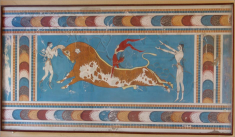Speaker
Description
The production of light nuclei in relativistic heavy-ion collisions is usually described by the thermal model and the coalescence model. The thermal model suggests that the light nuclei are emitted by a source in local thermal equilibrium with other hadrons and their yields are fixed at chemical freeze-out. However, given that the binding energies of light nuclei are only of the order of a few MeV, it is more likely that they are formed at a later stage by the final-state coalescence of protons and neutrons near the kinetic freeze-out surface. The final-state coalescence of nucleons will lead to the mass number scaling of the elliptic flow of light nuclei. This scaling states that the elliptic flow of light nuclei scaled by their respective mass numbers will follow very closely the elliptic flow of nucleons. Therefore, studying the elliptic flow of light nuclei will help us in understanding their production mechanism.
In this talk, we will present the transverse momentum ($p_{T}$) and centrality dependence of elliptic flow ($v_2$) of $d$, $t$, and $^3\text{He}$ and their antiparticles in Au+Au collisions at $\sqrt{s_{NN}}$ = 14.6, 19.6, 27, and 54.4 GeV from the Beam Energy Scan phase II. Mass number scaling of $v_2(p_T)$ of light (anti-)nuclei will be shown. In addition, $v_2(p_T)$ of light (anti-)nuclei will be compared with the AMPT model with nucleon coalescence.
Details
Mr. Rishabh Sharma
Indian Institute of Science Education and Research (IISER) Tirupati, India
http://www.iisertirupati.ac.in
| Is this abstract from experiment? | Yes |
|---|---|
| Name of experiment and experimental site | STAR |
| Is the speaker for that presentation defined? | Yes |
| Internet talk | Yes |
